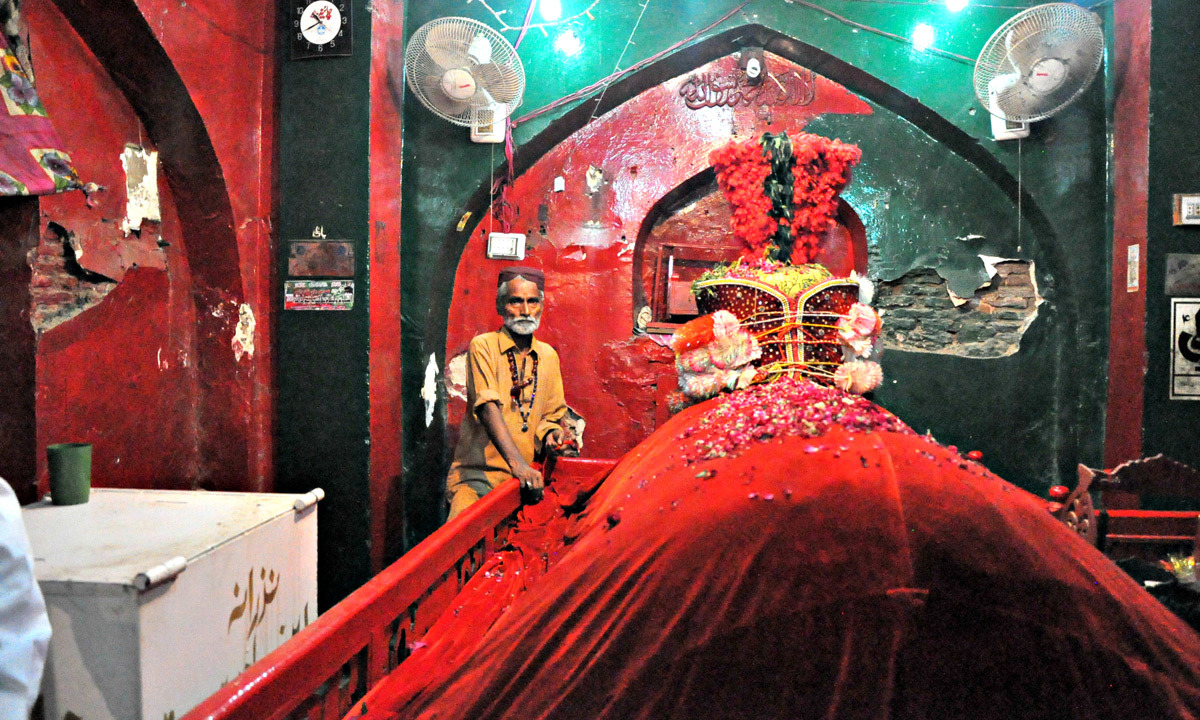Sehwan: The undisputed throne of Lal Shahbaz Qalandar

Farooq Soomro, the man behind 'The Karachi Walla' and 'Overheard in Karachi' explores the mysteries and wonders of places in Pakistan which fall off the beaten path.
Sehwan can be the perfect weekend getaway for a Karachi Walla especially in winters. Or let’s just say one should go there only in winters; I can say that because I went in the summers and it was too hot.
The road from Hyderabad is well maintained and traffic seems to be well in order. The fields of sunflowers by the highway make the route even more scenic.





It takes around one and half hour to reach Sehwan from Hyderabad, covering a distance of approximately 150 kilometers.
Sehwan or ‘Seevistan’ as it was called centuries ago, was an important stronghold for regional plenipotentiary and traders flocked its serai amidst their journeys to faraway places. But now most of that fortune has withered away.
Trade routes have shifted and the seat of power has moved to new urban centers and in between much of the older charm has dwindled. Now when you enter the city a sense of sadness hits you.



Amidst the blazing heat of the sun, vehicles, carts and people fighting for their space on the dusty roads, you can see villagers from nearby areas getting in and out of a Suzuki pickup, a popular means of transport in the area.
There is very little plantation and high salinity level has eaten up the paint on aesthetically unpleasing modern construction. The recent development is erratic and slogans of different political parties and posters of their leaders only add to the confusion.
Various politicians lay their claims to the Sehwan of today. Many have done that long before too. However, it remains associated to one dervish whose legend seems to grow with every passing day; Lal Shahbaz Qalandar. His stature dwarfs that of everyone else here, his shrine dwarfs every other structure. His claim to the throne of Sehwan remains unchallenged even today.



Syed Mohammad Usman Marwandi, popularly known as Lal Shahbaz Qalandar was a 12th century Sufi who was born in Marwand, present day Afghanistan. He travelled to Medina, Karbala and Mashhad to seek spiritual guidance and according to popular legend, was instructed to settle in the subcontinent to spread word of God there.
He was a contemporary of Syed Jalal-ud-din Bukhari of UchSharif. He settled in Sehwan after travelling extensively in present day Punjab, Sindh, Ajmer and finally settled in Sehwan.
His favorite disciple was Bodla Bahaar whose shrine is near the old fortress and is definitely worth a visit. You would find a group of singers there celebrating the legend of Lal Shahbaz and Bodla Bahaar. People there told us of the famous story of Bodla Bahaar rising from his death and turning the fortress upside down.
The story goes that the ruler of Sehwan grew fearsome of the popularity of Lal Shahbaz and Bodla Bahaar and ordered to slaughter Bodla Bahaar into pieces. The soldiers executed the order and scattered his body pieces.




When Lal Shahbaz heard of the incident, he called the name of his favorite disciple and his chopped up body transformed back into Bodla Bahaar to answer back to his master’s call! When the ruler still did not heed to Lal Shahbaz’s preaching, Bodla Bahaar on the orders of Lal Shahbaz turned the whole fortress upside down. People claim that the ruins still show an upside down settlement.
Walk down the narrow alleys from Bodla Bahaar to Lal Shahbaz’s shrine. It is full of shops selling everything from flowers to chaddars to plastic toys and Chinese electronics. There’s never a dull moment there.
People sipping tea, smoking pipes, sharing joints, shopping and lighting clay diyas throughout the night. The most striking phenomenon is the presence of women.
They are everywhere, either just shopping or enjoying music, some even dancing to the shrine’s dhamaal. They are free from social stigmas which follow them elsewhere. Here in Shahbaz’s nagri.




Attending the dhamaal at maghrib is a must. You find a contingent of musicians beating giant drums.
Children, elders and women dance without a care, some with watery eyes and others with a smile that is infectious. Dhamaal ends within hour or so but you find music and drum beat following you throughout the night. You find families from all over Pakistan relaxing in corners of the shrine and its compound, some preparing their meals and others eating at food stalls around the shrine.



The party does not end. One eventually decides to think about going back but not before saying their prayers at the shrine. You have to compete with an ever present crowd to get your chance, making your way through people saying prayers in reverence, some crying and putting their head on the railing. Lal Shahbaz still gives them hope irrespective of their creed, caste or gender. A sense of veneration and gratitude strikes you.
Farooq Soomro is a quintessential Karachi denizen who likes to document life (or the lack of it) in Karachi and elsewhere. He likes to collect vinyl records and books.
Follow him on Facebook or his blog, The Karachi Walla.



